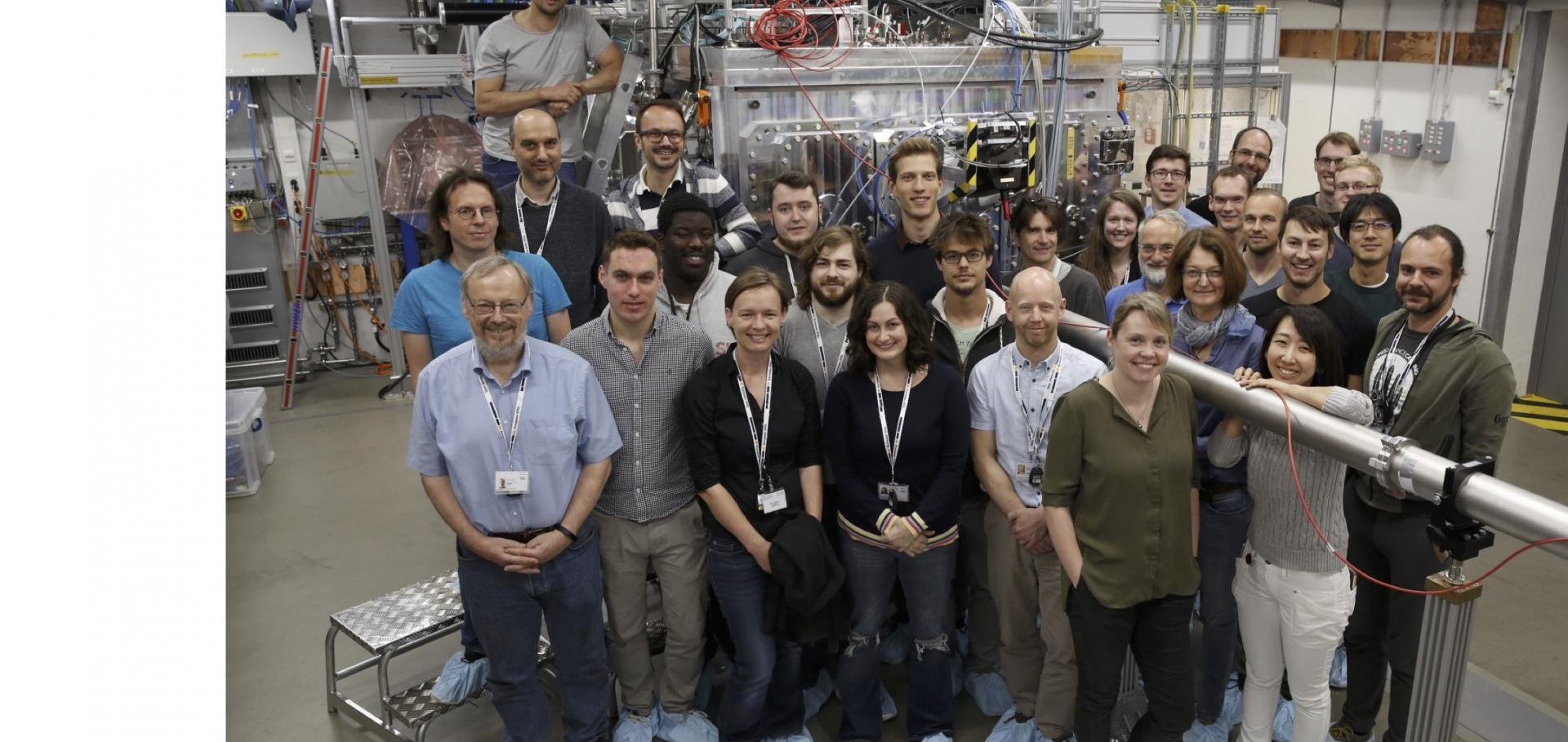Identification of phase transitions and metastability in dynamically compressed antimony using ultrafast x-ray diffraction
Physical Review Letters American Physical Society 122:25 (2019) 255704
Abstract:
Ultrafast x-ray diffraction at the LCLS x-ray free electron laser has been used to resolve the structural behavior of antimony under shock compression to 59 GPa. Antimony is seen to transform to the incommensurate, host-guest phase Sb-II at ∼11 GPa, which forms on nanosecond timescales with ordered guest-atom chains. The high-pressure bcc phase Sb-III is observed above ∼15 GPa, some 8 GPa lower than in static compression studies, and mixed Sb-III/liquid diffraction are obtained between 38 and 59 GPa. An additional phase which does not exist under static compression, Sb-I', is also observed between 8 and 12 GPa, beyond the normal stability field of Sb-I, and resembles Sb-I with a resolved Peierls distortion. The incommensurate Sb-II high-pressure phase can be recovered metastably on release to ambient pressure, where it is stable for more than 10 ns.Laboratory measurements of geometrical effects in the x-ray emission of optically thick lines for ICF diagnostics
Physics of Plasmas AIP Publishing 26:6 (2019) 063302
Abstract:
Understanding the effects of radiative transfer in High Energy Density Physics experiments is critical for the characterization of the thermodynamic properties of highly ionized matter, in particular in Inertial Confinement Fusion (ICF). We report on non-Local Thermodynamic Equilibrium experiments on cylindrical targets carried out at the Omega Laser Facility at the Laboratory for Laser Energetics, Rochester NY, which aim to characterize these effects. In these experiments, a 50/50 mixture of iron and vanadium, with a thickness of 2000 Å and a diameter of 250 μm, is contained within a beryllium tamper, with a thickness of 10 μm and a diameter of 1000 μm. Each side of the beryllium tamper is then irradiated using 18 of the 60 Omega beams with an intensity of roughly 3 × 1014 W cm−2 per side, over a duration of 3 ns. Spectroscopic measurements show that a plasma temperature on the order of 2 keV was produced. Imaging data show that the plasma remains cylindrical, with geometrical aspect ratios (quotient between the height and the radius of the cylinder) from 0.4 to 2.0. The temperatures in this experiment were kept sufficiently low (∼1–2 keV) so that the optically thin Li-like satellite emission could be used for temperature diagnosis. This allowed for the characterization of optical-depth-dependent geometric effects in the vanadium line emission. Simulations present good agreement with the data, which allows this study to benchmark these effects in order to take them into account to deduce temperature and density in future ICF experiments, such as those performed at the National Ignition Facility.Radiation transfer in cylindrical, toroidal and hemi-ellipsoidal plasmas
Journal of Quantitative Spectroscopy and Radiative Transfer Elsevier 235 (2019) 24-30
Abstract:
We present solutions of the radiative transfer equation for cylinders, hollow hemi-ellipsoidal shells and tori for a uniform plasma of fixed geometry. The radiative transfer equation is explicitly solved for two directions of emission, parallel and perpendicular to the axis of symmetry. The ratio between the fluxes in these two directions is also calculated and its use in measuring the frequency resolved opacity of the plasma is discussed. We find that the optimal geometry to use this ratio as an opacity measurement is a planar geometry.Recovery of metastable dense Bi synthesized by shock compression
Applied Physics Letters AIP Publishing 114:12 (2019) 120601
Abstract:
X-ray free electron laser (XFEL) sources have revolutionized our capability to study ultrafast material behavior. Using an XFEL, we revisit the structural dynamics of shock compressed bismuth, resolving the transition sequence on shock release in unprecedented details. Unlike previous studies that found the phase-transition sequence on shock release to largely adhere to the equilibrium phase diagram (i.e., Bi-V → Bi-III → Bi-II → Bi-I), our results clearly reveal previously unseen, non-equilibrium behavior at these conditions. On pressure release from the Bi-V phase at 5 GPa, the Bi-III phase is not formed but rather a new metastable form of Bi. This new phase transforms into the Bi-II phase which in turn transforms into a phase of Bi which is not observed on compression. We determine this phase to be isostructural with β-Sn and recover it to ambient pressure where it exists for 20 ns before transforming back to the Bi-I phase. The structural relationship between the tetragonal β-Sn phase and the Bi-II phase (from which it forms) is discussed. Our results show the effect that rapid compression rates can have on the phase selection in a transforming material and show great promise for recovering high-pressure polymorphs with novel material properties in the future.The use of geometric effects in diagnosing ion density in ICF-related dot spectroscopy experiments
High Energy Density Physics Elsevier 30 (2019) 45-51


